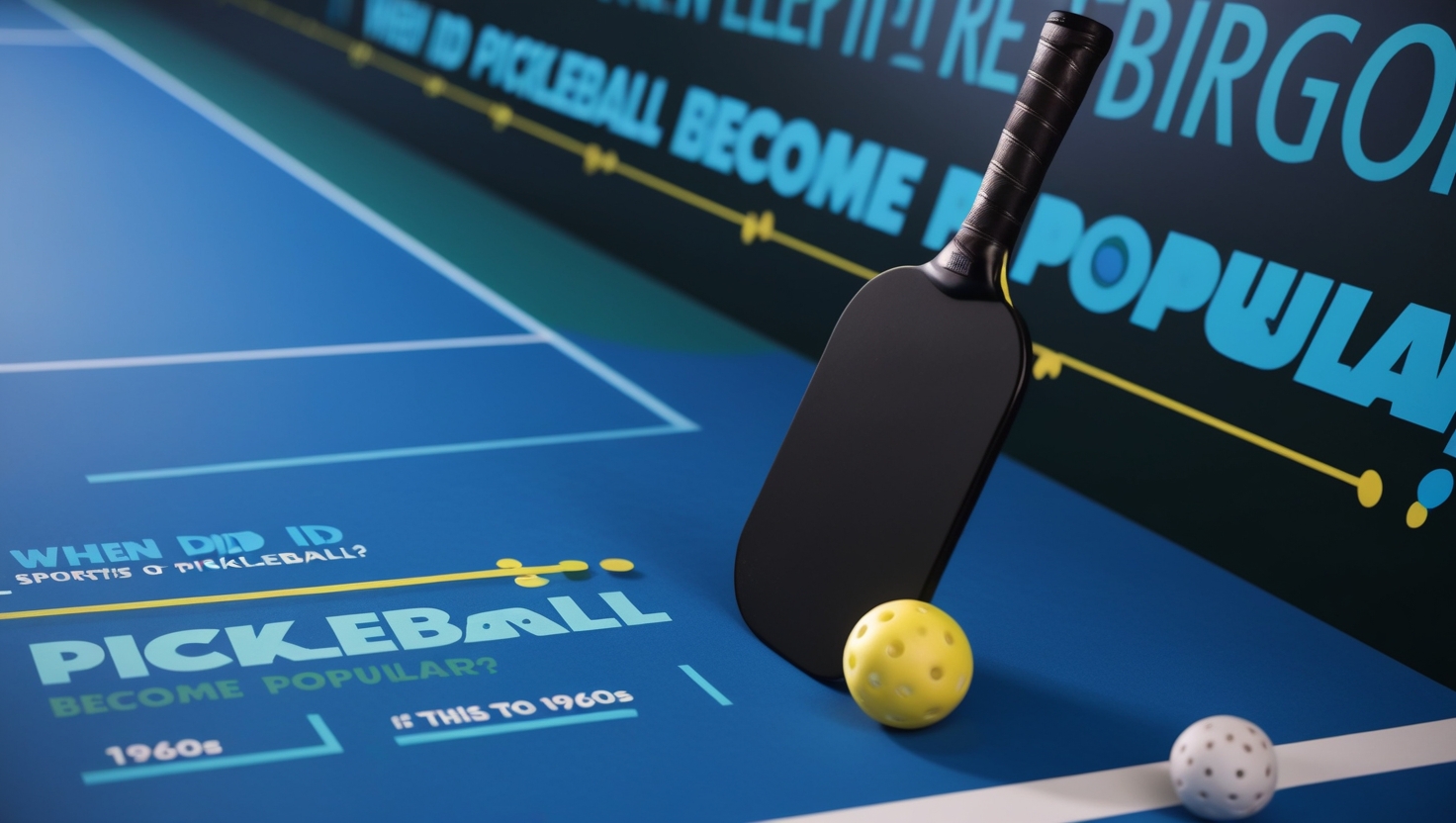Pickleball is one of the fastest-growing sports in the world, capturing the hearts of players across all age groups. It combines elements of tennis, badminton, and table tennis, offering a fun and engaging activity that promotes both social interaction and fitness. But when did pickleball become popular, and what factors contributed to its meteoric rise? This article delves into the timeline and key reasons behind the sport’s growing appeal.
The Origins of Pickleball

Pickleball was invented in 1965 by Joel Pritchard, Bill Bell, and Barney McCallum on Bainbridge Island, Washington. The goal was simple: create a family-friendly game that everyone could enjoy. They used a badminton court, improvised paddles, and a perforated plastic ball to craft the game.
Initially, pickleball remained a niche activity, largely confined to families and small communities. For decades, it was a recreational sport without widespread recognition.
The Turning Point: When Did Pickleball Become Popular?
The popularity of pickleball began to gain momentum in the early 2000s, particularly in the United States. Here’s a breakdown of the timeline:
2000s: Foundations for Growth
- Increased Exposure: Organizations like the USA Pickleball Association (USAPA), founded in 2005, laid the groundwork for promoting the sport through tournaments and standardized rules.
- Retirement Communities: Pickleball became particularly popular in retirement communities, where its low-impact nature made it accessible for older adults.
- Word of Mouth: Enthusiasts introduced the game to their friends and families, slowly expanding its reach.
2010s: Mainstream Recognition
- Social Media Influence: Platforms like Facebook and YouTube helped pickleball enthusiasts share tips, highlights, and tutorials, making it more visible to a global audience.
- Sports Facilities: Parks and recreation departments across the U.S. began building dedicated pickleball courts, catering to the sport’s growing fanbase.
- Tournaments and Leagues: Competitive play saw a boom, with events like the US Open Pickleball Championships (established in 2016) drawing thousands of players and spectators.
2020s: Explosive Growth
- Pandemic Boost: The COVID-19 pandemic accelerated pickleball’s popularity. Its outdoor nature and suitability for small groups made it a perfect activity for maintaining social connections during lockdowns.
- Celebrity Endorsements: High-profile figures like LeBron James and Tom Brady investing in pickleball teams brought media attention and boosted its credibility.
- Youth Involvement: Schools and community programs started including pickleball in their curriculums, introducing it to younger generations.
>>> See More: Is Pickleball Like Tennis? Exploring the Differences and Similarities
How Has Pickleball Gained Popularity?
The factors contributing to pickleball’s rise are multifaceted, blending accessibility, community appeal, and media exposure. Let’s explore these elements in detail.
1. Accessibility
Pickleball is easy to learn and play, requiring minimal equipment and space. Unlike other racket sports, its slower pace and smaller court size make it approachable for beginners while still challenging for advanced players.
2. Community and Inclusivity
One of the sport’s most appealing aspects is its sense of community. Pickleball encourages interaction among players, making it a social activity rather than just a competitive one. Its inclusivity bridges generational and skill gaps, creating an environment where people of all ages can play together.
3. Health and Fitness Benefits
Pickleball offers a full-body workout, improving cardiovascular health, balance, and coordination. Its adaptability to different fitness levels ensures that players can participate without overexertion, making it particularly popular among older adults.
4. Media Coverage and Celebrity Influence
As mentioned earlier, media coverage and celebrity endorsements have played a pivotal role in increasing pickleball’s visibility. Videos of exciting matches, strategic plays, and humorous mishaps have gone viral, capturing the attention of millions.
5. Competitive Appeal
Pickleball isn’t just a casual game—it’s a competitive sport with organized leagues, tournaments, and rankings. This dual appeal caters to both recreational players and those seeking to compete at higher levels.
Global Reach: Pickleball’s Popularity Beyond the U.S.
While pickleball’s origins are American, its appeal has transcended borders. Countries like Canada, India, Australia, and several European nations have embraced the sport. International tournaments and collaborations among pickleball organizations are fostering global growth.
The Future of Pickleball
The trajectory of pickleball’s popularity shows no signs of slowing. As more facilities are built, media coverage expands, and community programs introduce the game to diverse populations, the sport is poised for further growth. In the coming years, we can expect to see pickleball integrated into more schools, gyms, and recreation centers worldwide.
Conclusion
So, when did pickleball become popular? Its journey from a backyard pastime in the 1960s to a global phenomenon was gradual but transformative. The sport’s accessibility, health benefits, and community spirit have been pivotal in capturing the hearts of millions.
As we reflect on how pickleball has gained popularity, it becomes clear that its unique blend of inclusivity and excitement resonates with players of all ages and skill levels. Whether you’re a seasoned competitor or a casual enthusiast, pickleball offers something for everyone.
Thank you for joining us on this journey through pickleball’s history and rise. We hope this article inspires you to pick up a paddle and join the fun. For more tips and insights, stay connected with us here at pickleballtips.org!
